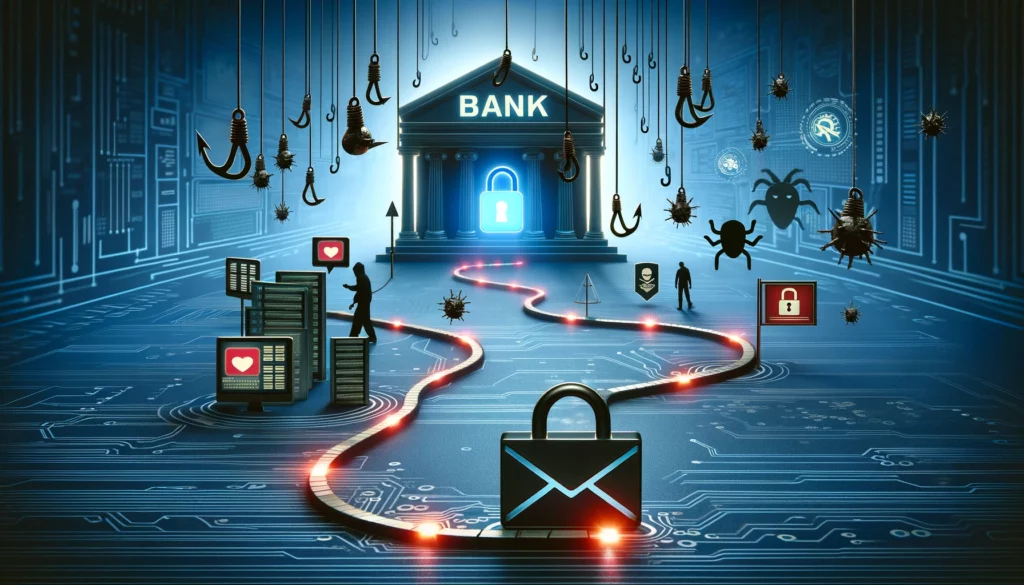In today’s fast-paced world, the convenience of online banking has revolutionized the way we manage our finances. Gone are the days of waiting in long lines at the bank or rushing to meet deadlines before branches close. With the power of technology at our fingertips, we can effortlessly conduct a wide range of financial transactions anytime, anywhere. Whether it’s checking our account balances before making a purchase, transferring funds to a friend in need, or setting up automatic bill payments to streamline our monthly expenses, online banking offers unparalleled flexibility and control over our financial lives. However, amidst this newfound freedom, it’s essential to recognize the importance of safeguarding our sensitive financial information from cyber threats. As we embrace the digital era of banking, understanding the fundamentals of online banking security becomes paramount to ensure peace of mind and protect ourselves from potential risks lurking in the virtual realm.
So, let’s explore the key principles and practices that can empower you to navigate online banking with confidence and resilience.
- Choose a Strong Password: Your password is the first line of defense against unauthorized access to your online banking account. Make sure to choose a strong and unique password that includes a combination of letters, numbers, and special characters. Avoid using easily guessable information such as your name, birthdate, or common words.
- Enable Two-Factor Authentication (2FA): Two-factor authentication adds an extra layer of security by requiring you to provide a second form of verification, such as a code sent to your mobile device, in addition to your password. This greatly reduces the risk of unauthorized access even if your password is compromised.
- Keep Your Devices Secure: Ensure that the devices you use for online banking, such as your computer, smartphone, or tablet, are protected with up-to-date antivirus and antimalware software. Regularly install security updates and patches to fix any vulnerabilities that cybercriminals could exploit.
- Beware of Phishing Attempts: Phishing is a common tactic used by cybercriminals to trick individuals into revealing their sensitive information, such as login credentials or financial details. Be wary of unsolicited emails, text messages, or phone calls that request personal or financial information, and never click on suspicious links or download attachments from unknown sources.
- Use Secure Networks: Avoid conducting online banking transactions over public Wi-Fi networks, as they are often unsecured and can be easily intercepted by hackers. Instead, use a trusted network that requires a password, such as your home Wi-Fi or a mobile hotspot.
- Monitor Your Accounts Regularly: Make it a habit to regularly review your account activity and statements for any unauthorized transactions or suspicious activity. Report any discrepancies to your bank immediately to prevent further fraud.
- Secure Your Mobile Banking App: If you use a mobile banking app, take steps to secure it by enabling biometric authentication, such as fingerprint or face recognition, if available. Also, ensure that the app is downloaded from a reputable source, such as the official app store, to avoid downloading malicious software.
- Educate Yourself: Stay informed about the latest cybersecurity threats and best practices for protecting your online banking accounts. Many banks offer resources and educational materials on their websites to help customers enhance their security awareness.
Safeguarding your online banking accounts against cyber threats requires a proactive approach. By following these basic security measures and staying informed about emerging threats, you can minimize the risk of falling victim to online banking fraud and protect your hard-earned money. Remember, when it comes to cybersecurity, it’s better to be safe than sorry.

Penetra Cybersecurity is at the forefront of defending the digital frontier, providing cutting-edge solutions to protect businesses and organizations from the ever-evolving threats of the cyber world. Established with a mission to create a safer internet for everyone, Penetra leverages a blend of advanced technology, expert knowledge, and proactive strategies to stay ahead of cybercriminals.
Ready to take the next step towards a more secure future? Schedule a consultation with us today and discover how we can help protect what matters most to you. Don’t wait until it’s too late—with Penetra Cybersecurity, your business isn’t just secure; it’s imPenetrable.




